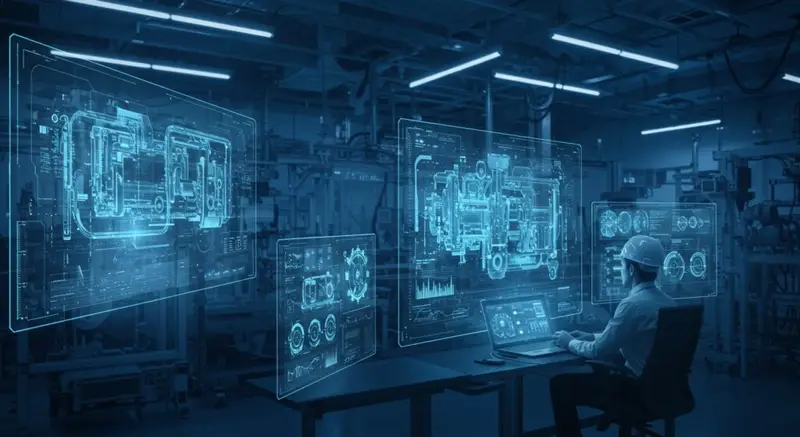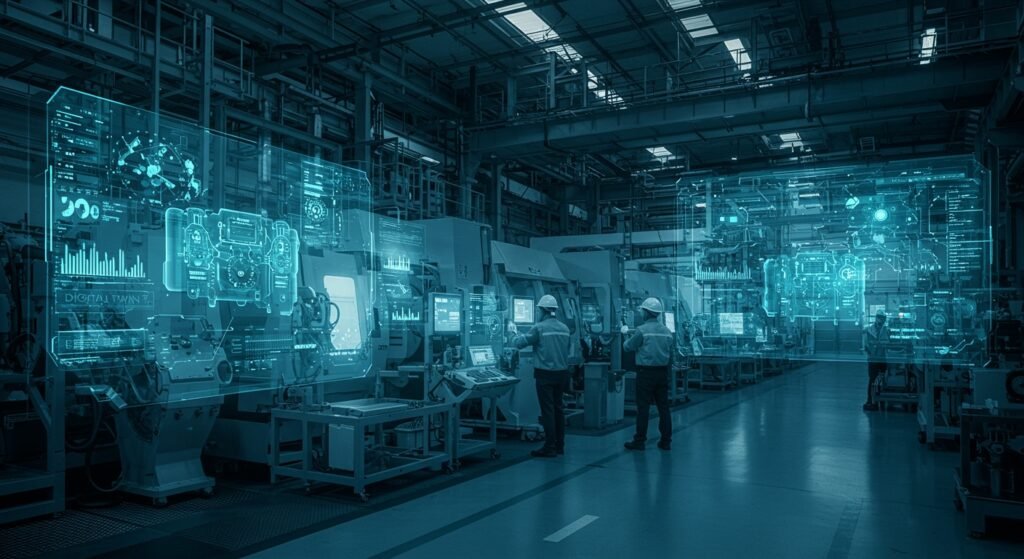7 Amazing Ways Digital Twins Revolutionize Industrial Systems
The industrial landscape is undergoing a profound transformation, driven by advancements in technology and data. At the forefront of this revolution are Digital Twins in Industrial Systems – virtual replicas of physical assets, processes, or even entire factories. These dynamic virtual models offer unprecedented insights, enabling companies to predict failures, optimize performance, and innovate at a speed previously unimaginable. From smart factories to predictive maintenance, the integration of digital twins is reshaping how industries operate, ensuring greater efficiency, reduced downtime, and enhanced decision-making.
Table of Contents
- What are Digital Twins?
- How Digital Twins Work in Industrial Systems
- Key Benefits of Implementing Digital Twins
- Real-world Applications and Use Cases
- Challenges and Future Outlook
What are Digital Twins?
A digital twin is a virtual model designed to accurately reflect a physical object. The object could be an engine, a wind turbine, a building, or even a city. What makes a digital twin revolutionary is its live connection to its physical counterpart. Sensors on the physical object collect real-time data, which is then fed into the digital model. This continuous data flow allows the digital twin to simulate the physical object’s state, behavior, and performance, evolving with it throughout its lifecycle. This concept is increasingly vital for modern industrial IoT applications.
How Digital Twins in Industrial Systems Function
In industrial settings, digital twins leverage a confluence of technologies to create their powerful simulations. This typically involves:
Data Collection and Integration
At the core, IoT sensors are deployed on physical assets (machinery, production lines, facilities) to capture vast amounts of real-time data. This data includes operational parameters, environmental conditions, performance metrics, and more. Advanced integration platforms consolidate this data, ensuring it’s clean and ready for analysis.
Modeling and Simulation
Sophisticated modeling software creates the virtual replica, incorporating CAD models, engineering specifications, and historical data. Simulation engines then use this model along with live data to mimic the physical system’s behavior under various conditions. This allows for ‘what-if’ scenarios without impacting actual operations.
Analytics and AI
Artificial intelligence (AI) and machine learning (ML) algorithms are applied to the data flowing into the digital twin. These algorithms identify patterns, predict potential issues (like equipment failure), and suggest optimal operational strategies. This is where predictive maintenance becomes a powerful reality.
Key Benefits of Implementing Digital Twins
The advantages of integrating digital twins into industrial processes are multifaceted and profound, leading to significant competitive edges:
- Enhanced Predictive Maintenance: By constantly monitoring asset health, digital twins can accurately predict when maintenance is needed, shifting from reactive to proactive strategies. This minimizes unplanned downtime and extends asset lifespan.
- Optimized Performance: Real-time insights allow operators to fine-tune processes, reducing energy consumption, improving throughput, and ensuring optimal operational efficiency.
- Risk Reduction: Simulating various scenarios in a virtual environment helps identify potential risks and bottlenecks before they manifest in the physical world, leading to safer operations.
- Faster Prototyping and Innovation: New designs or process changes can be tested virtually, accelerating product development cycles and fostering innovation with reduced costs.
- Improved Decision Making: Data-driven insights from digital twins empower managers with comprehensive understanding, leading to more informed and strategic decisions.
Real-world Applications and Use Cases
Digital twins are not just theoretical concepts; they are actively being deployed across a myriad of industrial sectors:
Manufacturing
In manufacturing, digital twins enable companies to create virtual models of entire production lines, optimizing workflows, identifying bottlenecks, and simulating changes before physical implementation. This leads to increased efficiency and reduced waste.
Energy Sector
For power plants and renewable energy farms (e.g., wind turbines), digital twins monitor performance, predict maintenance needs, and optimize energy generation. This ensures reliability and maximizes output.
Infrastructure Management
Digital twins of bridges, buildings, and transportation networks allow for real-time monitoring of structural integrity, traffic flow optimization, and proactive maintenance planning. Consider the data collected by sensors on a bridge:
| Data Point | Relevance to Digital Twin | Impact on Industrial Systems |
|---|---|---|
| Temperature Sensors | Monitor thermal expansion/contraction | Predict material stress, optimize cooling/heating |
| Vibration Sensors | Detect structural instability, machinery wear | Enable predictive maintenance, prevent catastrophic failures |
| Pressure Gauges | Monitor fluid/gas systems, hydraulic performance | Optimize pump efficiency, detect leaks |
| Current/Voltage Sensors | Track electrical consumption, motor health | Identify inefficiencies, prevent electrical overloads |
For more technical details on sensor integration, you might want to explore resources from organizations like the International Organization for Standardization (ISO), which often publishes standards related to industrial data and IoT.
Challenges and Future Outlook
While the potential of digital twins is immense, their implementation comes with challenges. These include the high initial investment in IoT infrastructure, data security concerns, and the need for specialized skill sets. However, as technology matures and costs decrease, these hurdles are becoming more manageable.
The future of Digital Twins in Industrial Systems is bright. We can expect more sophisticated models, greater integration with augmented reality (AR) and virtual reality (VR) for immersive experiences, and the development of “digital twin ecosystems” where multiple twins interact. This evolution will further blur the lines between the physical and digital worlds, driving unprecedented levels of efficiency, resilience, and innovation across all industrial sectors. The ongoing trends in industrial engineering will continue to be shaped by these advanced virtual models.


